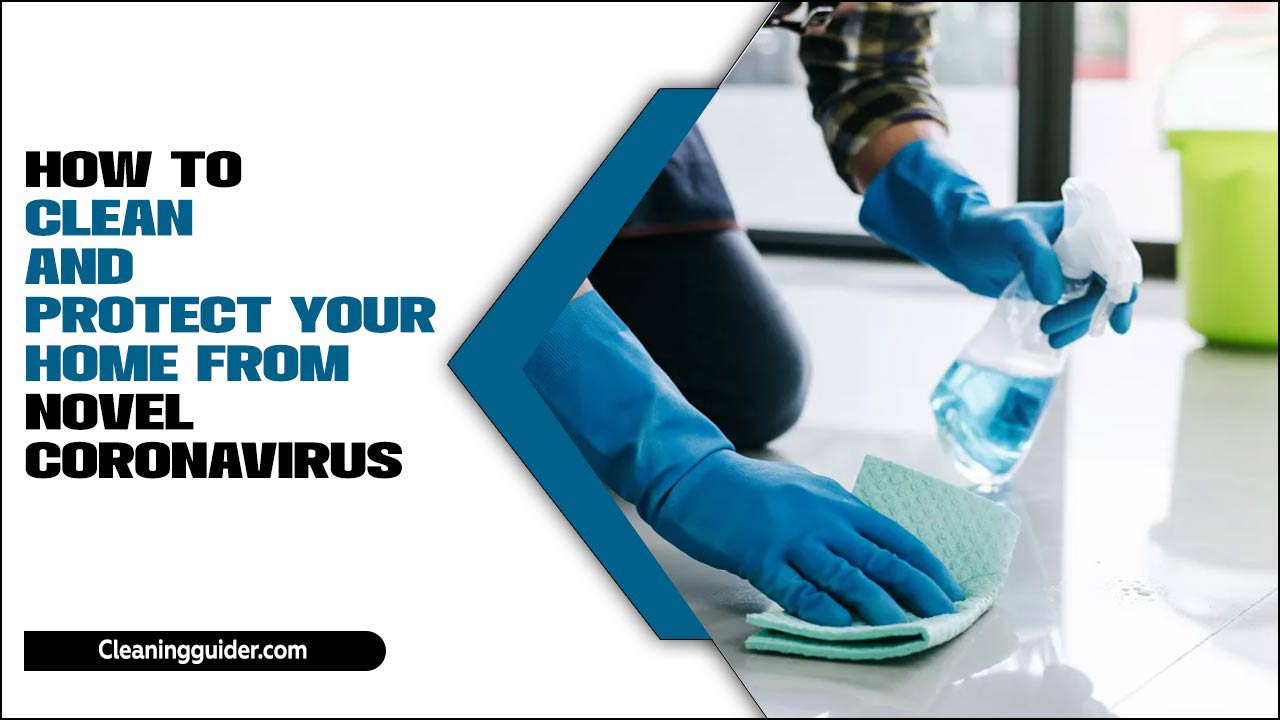Wood furniture can bring warmth and elegance to any space, but over time grime and dirt will inevitably accumulate on its surface, dulling its once pristine appearance. Whether it’s sticky fingerprints, food spills, or simply dust, these marks can be unsightly and difficult to remove.
Many people may resort to harsh chemicals or abrasive cleaners, but these methods can actually do more harm than good, causing damage to the delicate wood. Here, we will explore seven natural ways to clean grime off your wooden furniture.
From vinegar to coconut oil and candlenut, we have got you covered. We will also discuss how to clean grime off wood furniture why regular cleaning is important, and when you should consider professional cleaning. Keep reading to find out how you can keep your wooden furniture looking new for years!
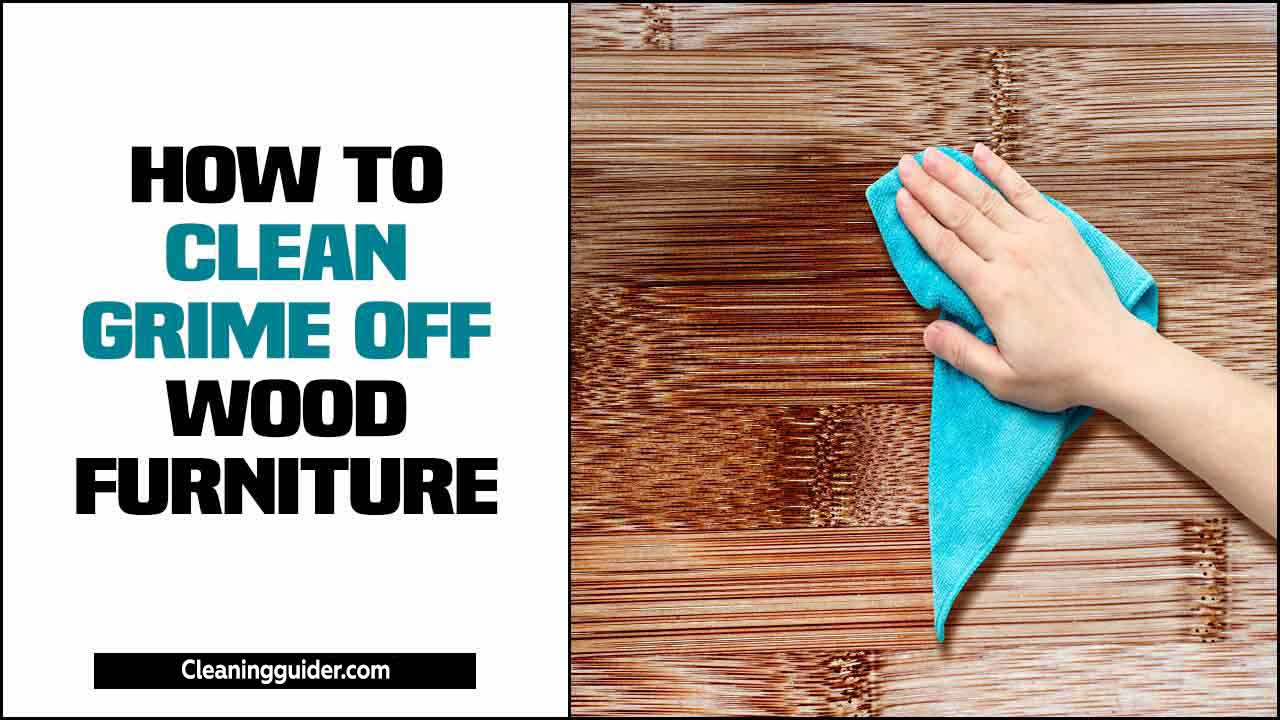
About Grime On Wood Furniture
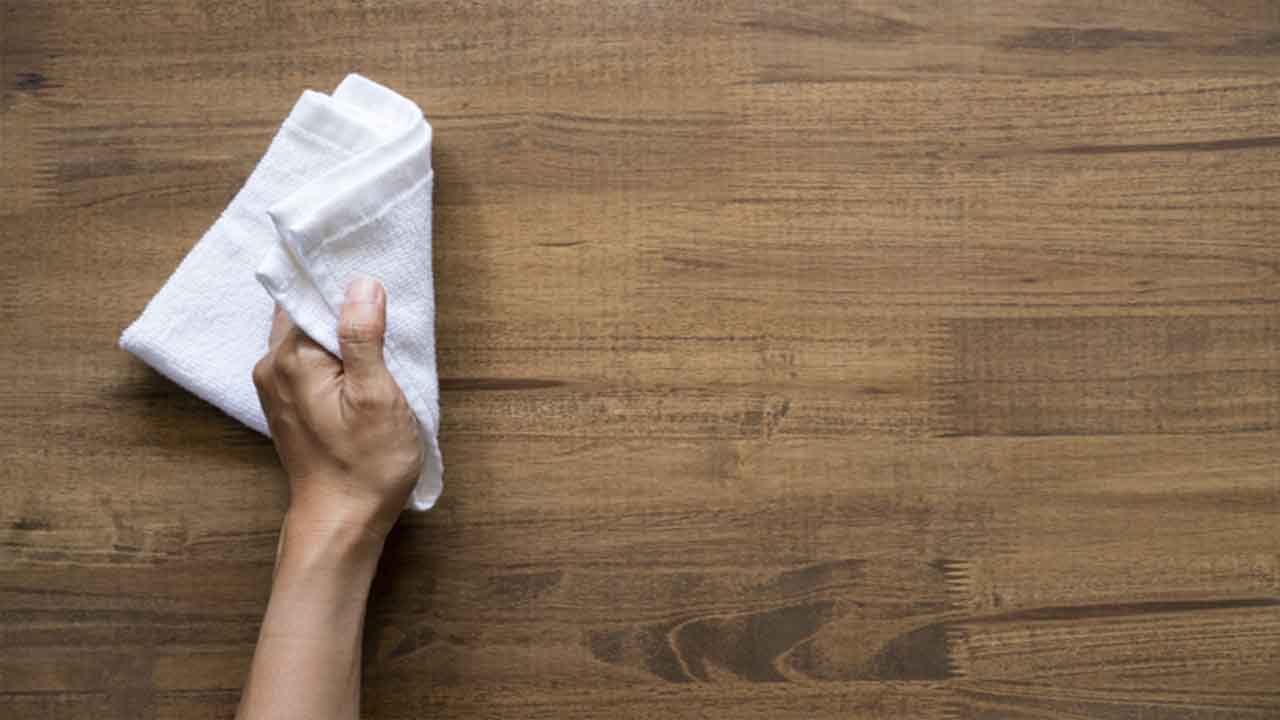
Grime on wood furniture is often a combination of dirt, grease, and oils that can accumulate over time, causing the furniture to lose its shine. This grime is usually a result of improper cleaning methods or neglect. Common sources of grime include fingerprints, food spills, and pet dander.
Regular cleaning is essential to prevent grime buildup and protect the integrity of the wood. Using mild soap, white vinegar, or household cleaners with a clean cotton cloth can help remove years of grime from the surface of wood furniture.
Factors Contributing To Grime Buildup
Factors contributing to grime buildup on wooden furniture can vary. One common factor is the lack of regular cleaning and maintenance, which allows grime to accumulate over time. Environmental factors like dust and air pollution can also contribute to the buildup of grime on the surface of wood furniture.
Grease and oils from cooking or hand contact can transfer onto furniture surfaces, further adding to the grime. Additionally, pets and children may leave behind dirt, hair, and other debris, while humidity and moisture can promote the growth of mold and mildew, leading to grime.
The Importance Of Regular Cleaning
Regular cleaning of wood furniture is essential for maintaining its beauty and longevity. Over time, grime can build up on the surface of wood furniture, dulling its shine and potentially causing damage. Dust, dirt, and oils from our hands can all contribute to this buildup of grime.
By regularly cleaning your wood furniture, you can remove this grime and restore its natural luster. Additionally, regular cleaning can help prevent stains and protect the wood from further damage.
It is recommended to use gentle cleaning solutions specifically designed for wood furniture and to avoid harsh chemicals or abrasive materials that can scratch the surface. Taking the time to clean your wood furniture regularly will not only keep it looking its best but also prolong its lifespan for years to come.
7 Natural Ways Of How To Clean Grime Off Wood Furniture
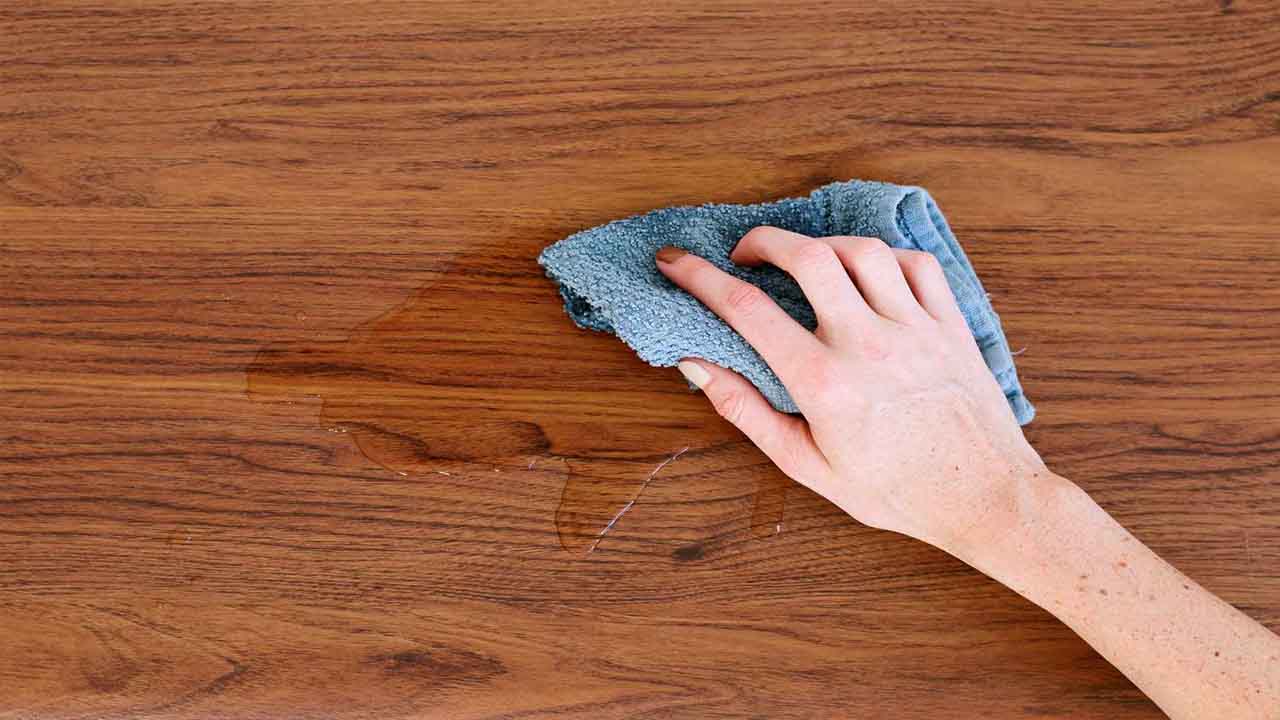
Cleaning grime off wood furniture can be a daunting task, but several natural methods can effectively remove dirt and restore the beauty of your wooden pieces. Cleaning wood furniture is an essential part of maintaining its beauty and longevity. To clean wood furniture, start by removing any dust or debris with a soft cloth or duster.
Remember to always test any cleaning method on a small, inconspicuous area of your wood furniture before applying it to larger areas to ensure there are no adverse effects. With these natural cleaning methods, you can effectively remove grime from your wood furniture and restore its natural beauty without using harsh Here are seven natural ways how to clean grime off wood furniture:
1. Use Vinegar
To clean grime off wood furniture, you can use vinegar as a natural and effective solution. Create a mixture of equal parts vinegar and water to make a natural wood furniture cleaner. Soak a clean cotton cloth in the vinegar solution and gently wipe the surface of the furniture.
Vinegar helps dissolve grime and sticky residue without causing any damage to the wood. However, it’s always recommended to test the vinegar solution on a small, inconspicuous area before applying it to the entire piece of furniture. After cleaning with vinegar, wipe the surface with a damp cloth to remove any residual vinegar.
2. Sand The Furniture, Apply Oxalic Acid
To start removing grime from wooden furniture, lightly sand the surface to get rid of the top layer of stains and dirt. After sanding, mix oxalic acid with warm water, following the instructions provided by the manufacturer.
Apply the oxalic acid solution to the furniture using a clean cloth or sponge, allowing it to sit for a few minutes. Then, wipe off the solution with a clean cotton cloth. To ensure no residue is left behind, rinse the furniture with plain water.
3. Use Baking Soda Paste
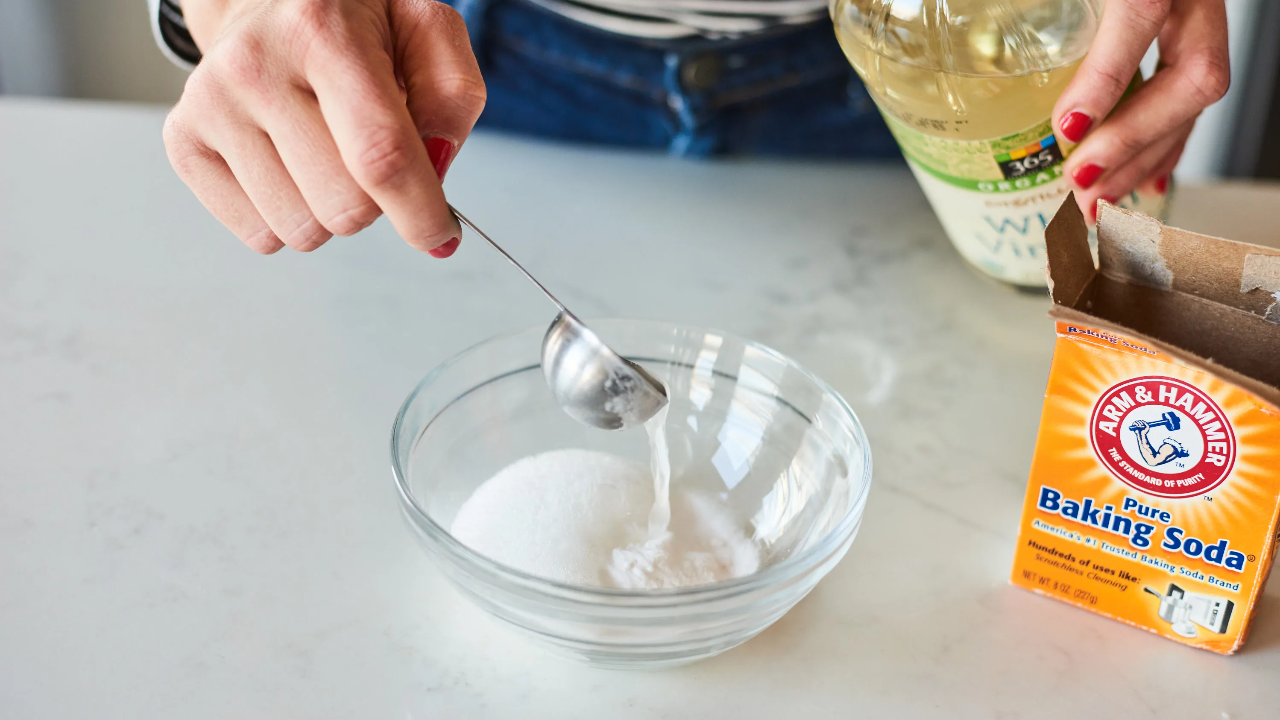
To clean grime off wood furniture, create a thick paste by mixing baking soda with water. Apply the baking soda paste to the grime-covered areas and gently scrub it in with a soft cloth or sponge.
Rinse the area with plain water and wipe it dry. Baking soda is an effective cleaner and deodorizer for wooden furniture, without causing any damage. Its abrasive nature helps remove years of grime and leaves your furniture looking fresh and clean. Remember to use a clean cotton cloth or sponge for better results.
4. Using Rock Salt, Lemon, Or Orange
Rock salt is a great natural option for cleaning wooden furniture. It effectively removes grime and dirt without causing any damage to the surface. Another option is to use lemon or orange peels. Rubbing these peels on the furniture can help eliminate grime and leave a fresh, citrus scent behind.
For a homemade wood furniture cleaner, you can mix olive oil and vinegar. This mixture not only cleans the surface but also polishes it, giving it a renewed shine. Tough stains can be treated with a paste made from baking soda and water. Simply apply the paste to the stains and let it sit before wiping it clean.
5. Use Water Only
To clean grime off wooden furniture, it’s best to avoid harsh chemicals that can damage the wood finish or leave behind residue. Instead, opt for using water only. Take a soft cloth and gently wipe down the surface of the furniture to remove any dirt or dust.
If there are stubborn stains or grime, you can mix water and vinegar to create a natural cleaning solution. Another option is to use a mixture of olive oil and lemon juice, which can help remove grime and restore shine. However, be cautious not to use too much water, as it can potentially cause warping or staining of the wood.
6. Coconut Oil

When it comes to cleaning wood furniture, opting for natural methods is always a wise choice. Harsh chemical cleaners can pose dangers to the integrity of the wood and its finish. That’s where coconut oil comes in as a gentle yet effective solution.
Coconut oil not only removes grime and dirt from wooden furniture but also nourishes and moisturizes the surface. To use coconut oil, simply prepare a mix of coconut oil and vinegar, apply it to a clean cotton cloth, and gently rub it onto the furniture. Other natural cleaning methods, such as vinegar and olive oil, can also be used. Regularly cleaning and maintaining wood furniture is essential to prolong its life span.
7. Candlenut
To clean grime off wood furniture, there are several natural solutions you can try. One option is to create a vinegar and water solution, which can be effective in breaking down dirt and grime. Another method involves making a paste using baking soda and water, which can help to scrub away the grime gently.
For a refreshing scent and added shine, you can mix lemon and olive oil together. Additionally, tea tree oil diluted in water can act as a natural disinfectant. White toothpaste mixed with water can also be used to tackle tough stains.
In cases of stubborn grime buildup, mineral spirits can be used, but it is important to use them with caution, as they can be harsh on wood surfaces. By trying these natural cleaning methods, you can restore the beauty of your wooden furniture without resorting to harsh chemical cleaners.
When Should You Consider Professional Cleaning?

Cleaning grime off wood furniture can be a time-consuming and labour-intensive task. While many people are able to clean their wood furniture themselves successfully, there may be certain circumstances where professional cleaning is necessary.
For example, if the grime is particularly stubborn or if the furniture has intricate detailing that is difficult to clean, professional cleaners with specialized tools and techniques may be able to achieve better results.
Additionally, if the wood furniture is antique or valuable, it is best to consult with professionals who have experience in handling delicate pieces. Ultimately, the decision to hire professional cleaners should be based on the condition of the furniture and your comfort level in tackling the cleaning process.
How Often Should You Clean Your Wood Furniture?
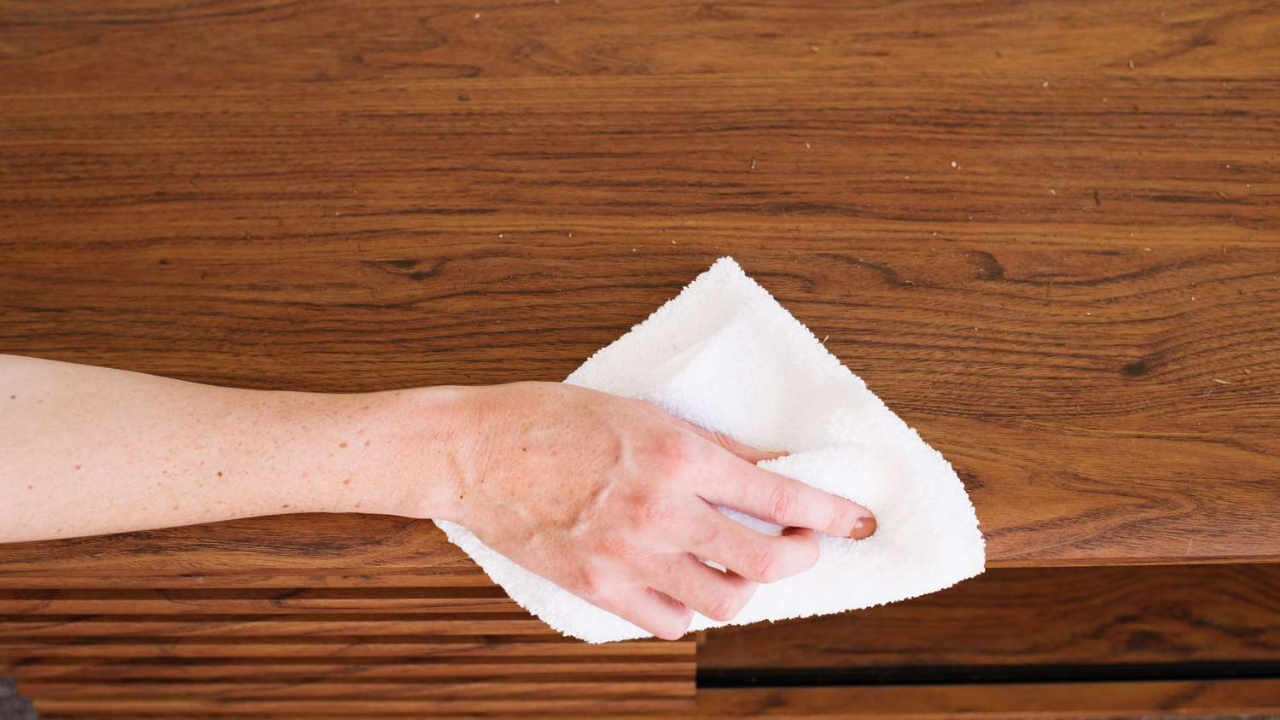
Cleaning your wood furniture regularly is essential for maintaining its appearance and longevity. The frequency at which you should clean your wood furniture will depend on several factors, including the amount of use it receives and the environment in which it is located.
As a general rule, it is recommended to dust your wood furniture at least once a week to remove any surface dirt or debris. Additionally, you should deep clean your wood furniture every few months to remove any built-up grime or stains. This can be done using a mild soap and water solution or a specially formulated wood cleaner. By following a regular cleaning routine, you can keep your wood furniture looking beautiful for years to come.
Conclusion
Regular cleaning and maintenance of your wood furniture is crucial to keep it looking pristine and extend its lifespan. There are various natural ways to remove grime buildup, such as using vinegar, baking soda paste, or coconut oil. However, if the grime is stubborn or the furniture requires special care, it’s best to consider professional cleaning.
Additionally, it’s important to clean your wood furniture regularly to prevent excessive grime accumulation. By following these tips and incorporating natural cleaning methods into your routine, you can ensure that your wood furniture remains beautiful and well-maintained for years to come. We’ve discussed how to clean grime off wood furniture.
Frequently Asked Questions
1.How Do You Remove Thick Grime From Wood Furniture?
Ans: To remove thick grime from wood furniture, create a cleaning solution by mixing warm water and dish soap. Apply the solution to the affected area using a soft cloth. Gently scrub away the grime with a toothbrush or soft-bristled brush. Finally, wipe away any excess moisture with a clean, dry cloth.
2.Is Murphy’s Oil Soap Good For Wood Furniture?
Ans: Murphy’s oil soap is a reliable choice for cleaning wood furniture. It effectively eliminates dirt and grime without harming the wood. However, it’s important to use it in moderation and perform a patch test before using it on your furniture.
3.How Should I Clean Modern Wood Furniture Now?
Ans: To clean modern wood furniture, it’s important to follow the manufacturer’s instructions. Use a soft microfiber cloth to avoid scratching the surface. Avoid water and harsh chemicals like bleach or ammonia. Gentle cleaning can be done using natural cleaners like vinegar or lemon juice mixed with olive oil.
4.What’s The Best Way To Dust Wood Furniture?
Ans: To dust wood furniture effectively, use a soft, lint-free cloth or microfiber duster. Avoid harsh chemicals and water to prevent damage. Gently dust with light strokes to avoid scratching the surface. Regular dusting prevents buildup and keeps your furniture looking its best.
5.Should You Dust, Clean, Or Wax Your Wood Furniture?
Ans: Regular dusting is essential to remove surface dirt and prevent buildup on wood furniture. For deeper cleaning, use a gentle solution and cloth. Waxing can provide occasional protection and shine, but the best method depends on the type of wood and finish.




